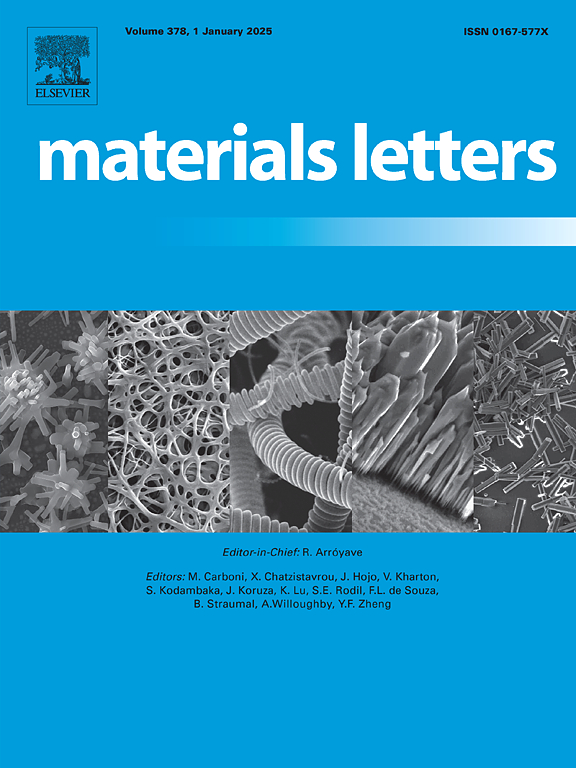Microstructure evolution and plastic deformation of quinary Zr-Ni-Cu-Al-Co amorphous-crystalline hybrid alloy
IF 2.7
4区 材料科学
Q3 MATERIALS SCIENCE, MULTIDISCIPLINARY
引用次数: 0
Abstract
An amorphous-crystalline hybrid microstructure was fabricated by adjusting the solidification mechanism of quinary Zr58Cu17Ni12Al11Co2 alloy. At low cooling rates below 1.2 × 104 K·s−1, lamellar (Zr8Cu5 + Zr2Cu) eutectic growth dominated its solidification process, whereas Zr8Cu5 phase would grow independently at higher cooling rates. The critical cooling rate for amorphous transition was determined as 5 × 104 K·s−1, beyond which the nucleation and growth of Zr8Cu5 phase were suppressed and liquid alloy transformed to amorphous phase. The compressive deformation mechanisms were modulated by such microstructure variation. Fracture analysis suggested that the tiny Zr8Cu5 grains formed in metallic glass induced the formation of multiple shear bands and thus promoted plastic deformation. Once grain size increased to 92.2 μm, the fracture mechanism changed from intergranular fracture to transgranular fracture, which reduced the plastic deformation. The maximum plastic deformation attained 3 % at 1.2 × 104 K·s−1 cooling rate, which was 3.5 times greater than that of pure metallic glass.
求助全文
约1分钟内获得全文
求助全文
来源期刊

Materials Letters
工程技术-材料科学:综合
CiteScore
5.60
自引率
3.30%
发文量
1948
审稿时长
50 days
期刊介绍:
Materials Letters has an open access mirror journal Materials Letters: X, sharing the same aims and scope, editorial team, submission system and rigorous peer review.
Materials Letters is dedicated to publishing novel, cutting edge reports of broad interest to the materials community. The journal provides a forum for materials scientists and engineers, physicists, and chemists to rapidly communicate on the most important topics in the field of materials.
Contributions include, but are not limited to, a variety of topics such as:
• Materials - Metals and alloys, amorphous solids, ceramics, composites, polymers, semiconductors
• Applications - Structural, opto-electronic, magnetic, medical, MEMS, sensors, smart
• Characterization - Analytical, microscopy, scanning probes, nanoscopic, optical, electrical, magnetic, acoustic, spectroscopic, diffraction
• Novel Materials - Micro and nanostructures (nanowires, nanotubes, nanoparticles), nanocomposites, thin films, superlattices, quantum dots.
• Processing - Crystal growth, thin film processing, sol-gel processing, mechanical processing, assembly, nanocrystalline processing.
• Properties - Mechanical, magnetic, optical, electrical, ferroelectric, thermal, interfacial, transport, thermodynamic
• Synthesis - Quenching, solid state, solidification, solution synthesis, vapor deposition, high pressure, explosive
 求助内容:
求助内容: 应助结果提醒方式:
应助结果提醒方式:


